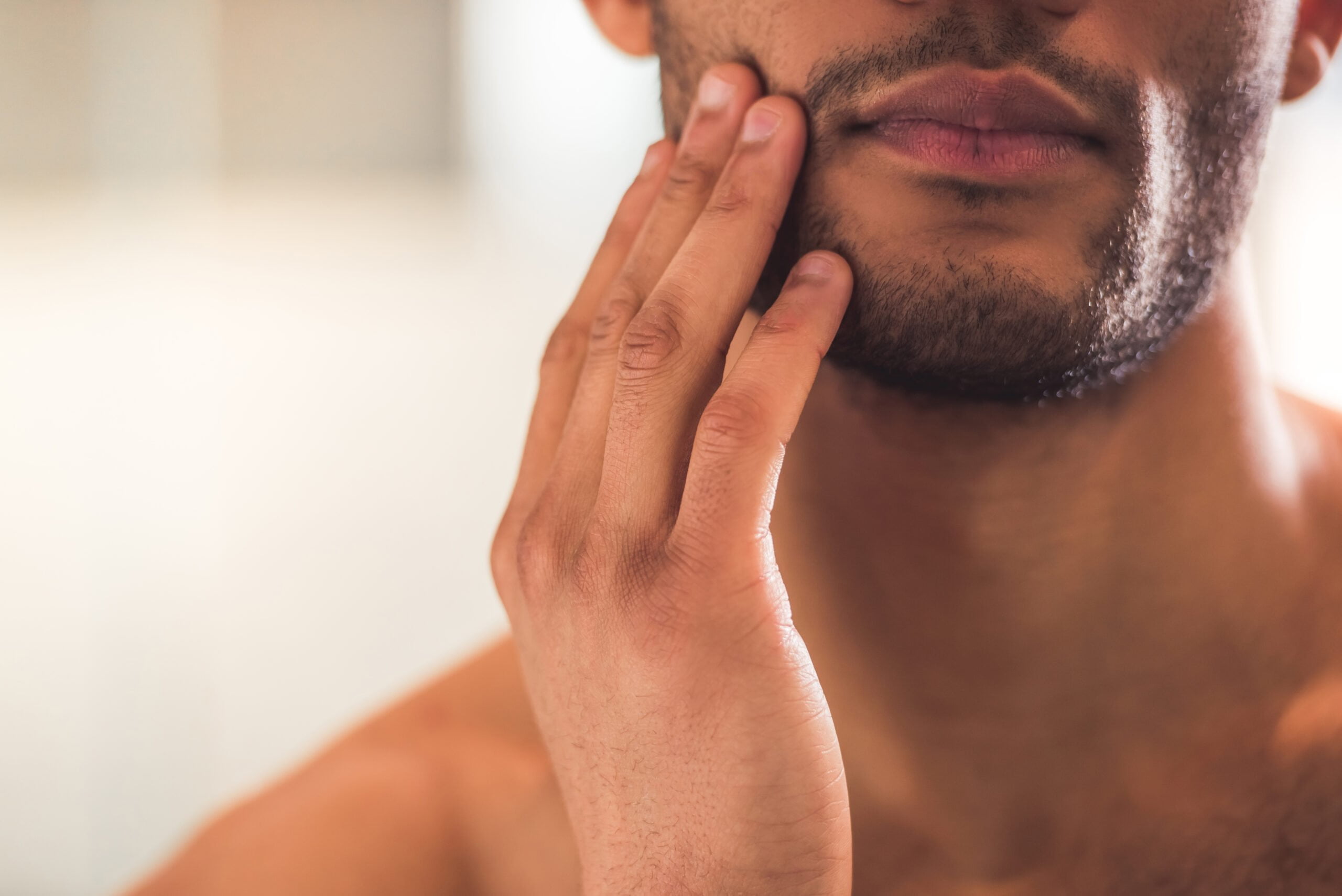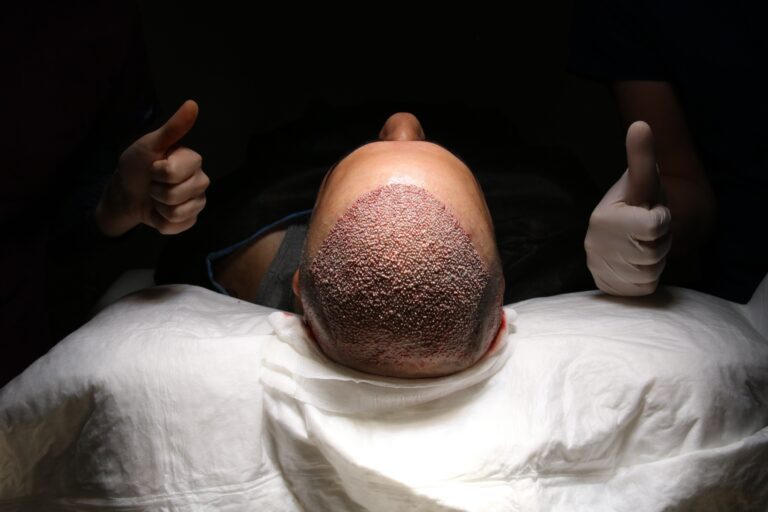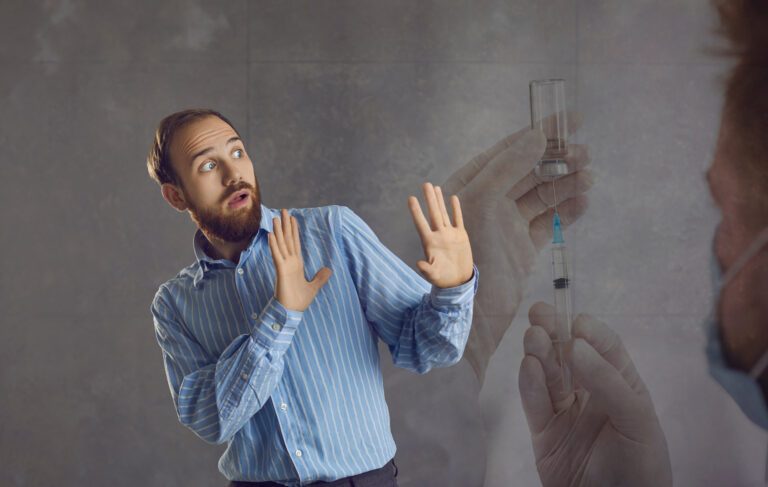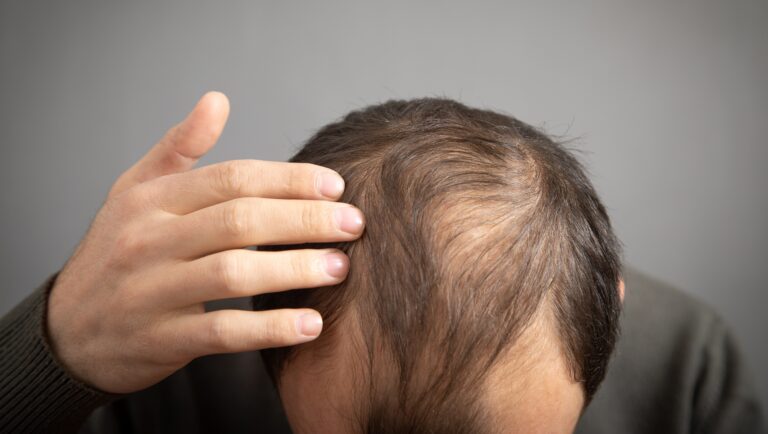Can Body & Beard Hair Be Used for a Hair Transplant?
A successful hair transplant procedure requires maximum hair density and volume. So, what if there’s not enough hair left on the head to graft?
Luckily, there have been major advances in body and beard hair to head transplant in recent years. So, men with severe hair loss or a very limited supply of scalp donor hair can now get a hair transplant.
In this post, we’ll discuss the various possibilities of a hair transplant from body and beard hair, as well as how the procedure is done and its success rate.
Is It Possible to Use Body and Beard Hair for a Hair Transplant?
The development of the FUE method has made it possible to use body and beard hair for hair transplants. Only through this method can surgeons safely and successfully transplant body hair.
Follicular Unit Extraction
For decades, dermatologists all over the world developed surgical hair restoration techniques. Most notable is the work of Japanese dermatologist Dr. Masumi Inaba. Dr. Inaba demonstrated a technique similar to modern-day follicular unit extraction (FUE) in 1988.
Taking a cue from Dr. Inaba’s work, Dr. William Rassman and Dr. Robert Bernstein published their work on “minimally invasive hair transplants.” They also coined the term FUE in 2002.
FUE has since become the standard method for safe and successful hair restoration around the world.
The FUE method involves relocating hair follicles (grafts) from the back and sides of the head (donor area) to a balding area (recipient area). In an FUE transplant surgery, surgeons use scalp hair as donor hair to restore a receding hairline or a thin crow.
Nevertheless, as the technique evolved, surgeons practicing FUE noticed that the scalp had a limited donor area. As a result, it’d be difficult to cover larger areas of baldness. This led surgeons to experiment with using body hair as donor hair instead.
Body Hair Transplant
A body hair transplant (BHT) is the latest technique used in hair transplant surgeries. It’s a safe body hair to head transplant that involves grafting hair from areas of the body with high hair density to areas with low hair density.
Nonetheless, body hair transplants are more commonly performed to restore hair density to the scalp. The goal is for the donor body hair to grow similarly to the patient’s scalp hair once transplanted.
Difference Between Scalp Hair and Body Hair
Not all of your body’s hair is the same. Human hair comes in two basic types: vellus hair and terminal hair. They differ in texture and growth cycles, making one type a better candidate for a body hair transplant.
Texture
Vellus hair is fine, short, lightly pigmented hair that grows on the face, arms, stomach, and legs.
Terminal hair, on the other hand, is coarse, thick hair that grows on the scalp, eyebrows, eyelashes, and underarms. In men, terminal hair also grows on the face, chest, back, and stomach.
Growth Cycle
The growth cycle of any type of hair depends on genetics and environmental factors.
However, generally, vellus hair has a short growth (anagen) phase and a long resting (telogen) phase. This means that it doesn’t grow for very long before it stops. Arm and leg hair, for example, grows for about 30–45 days and then enters the resting phase.
The growth cycle of terminal hair, however, depends on where it’s on the body.
While body hair grows 4x faster than scalp hair, it has a short growth phase and a much longer resting phase.
Scalp hair, on the other hand, has the longest growth phase, which can last up to several years. It also has the shortest resting phase, which lasts for about 100 days before shedding. That’s why scalp hair grows longer than any other hair on the body.
The growth cycle of beard hair falls somewhere between the scalp and body hair. Beard hair has a longer growth phase than body hair but isn’t as long as scalp hair. It does, however, stay in the resting phase longer than scalp hair.
Who Would Benefit From a Body Hair Transplant?
Body hair transplants are often recommended for patients who suffer from:
- Alopecia areata
- Cicatricial alopecia
- Pattern baldness
- Trichotillomania
In general, patients who have limited donor scalp hair, severe hair loss, or complete baldness are the best candidates for a body hair to head transplant.
Other cases in which a patient may benefit from a body hair transplant include:
- Had laser removal and wish to reverse it
- Lost hair due to trauma, injury, or burns
- Wish to conceal a scar
Ideally, you should be between the ages of 25 and 65 to get a body hair transplant. You should also be in good health overall. Not to mention that you need to be hairy, which is why men are better candidates for body hair transplants than women.
So, make sure to consult your dermatologist to see if you’re a candidate for a body hair to head transplant. During the consultation, your doctor will assess your overall health and hair condition.
If you meet the criteria, your doctor will determine the best donor areas for you, as well as the number of hair grafts required to achieve the results you want. You should also be able to discuss any specific requirements you may have.
Which Body Hair Is Best for a Body Hair Transplant?
A body hair transplant proceeds in the same manner as standard FUE hair transplant surgery. The only difference is that the surgeon uses donor hair from other areas besides the scalp.
Still, in many cases, a surgeon doesn’t exclusively use body hair due to the differences in texture and growth cycles.
50% of chest hair, for example, spends most of its cycle in the resting phase, after which it falls out. As a result, using only chest hair in a hair transplant would most likely lead to bald patches down the road. That’s why some surgeons use hair grafts from both the chest and back.
What’s more, the hair on the arm, leg, underarm, and abdomen is too soft and has a short growth cycle. So, using hair from those areas as donor hair isn’t suitable for a hair transplant.
The only exception can be beard hair. It’s thicker in diameter and thus covers larger areas with less mass. It can also grow to any length. As a result, it’s closest to scalp hair and thus the most commonly used non-scalp donor area.
That said, the firm and rigid texture of beard hair are different from that of scalp hair. So, grafting from beard hair to the hairline may produce an unnatural appearance. When used on its own, beard hair is best for increasing hair density or filling out the mid-scalp and crown.
How Successful Is Body Hair Transplant?
A body hair transplant is non-invasive and has so far produced promising results. Beard hair to head transplants, especially, have been the most successful type of BHTs.
Still, most surgeons only perform body hair transplants as a last resort for patients who have exhausted all other options.
Here’s why:
Insufficient Research
To begin, there hasn’t been as much research and study on using body hair in transplants as there has been on using scalp hair.
We know that body hair doesn’t always have the same texture and growth cycle as scalp hair. Not to mention that the thickness of the skin varies from the scalp to the rest of the body.
So, the procedure’s outcomes and progress may be unpredictable. It’s very likely that transplanted body hair may not grow as long or as thick as the patient’s scalp hair.
Procedure Complexity
Skin tissue varies from the body to the face to the scalp. As a result, surgeons need to use various specialized equipment to reduce the rate of transection and micro-scarring.
So, although surgeons use the FUE technique to graft body hair, they need even more specialized tools and instruments during BHT.
What’s more, because 85–90% of scalp hair is in the growth phase, surgeons need to graft hair follicles that are also in the growth phase. The problem is that over 50% of body hair is in the resting phase at any given time.
Not to mention that the scalp’s follicular units contain around 2–3 hair follicles. The follicular units in the body, on the other hand, are usually around 1–2 hair follicles. As a result, a surgeon may need to extract more hair grafts to achieve the desired coverage and density.
All of these factors make body hair to head transplants more difficult than standard hair transplants.
In Conclusion
Hair transplant from body and beard is fantastic news for men who have severe hair loss or a limited supply of scalp hair.
Unfortunately, body hair transplant isn’t yet as accessible as the standard procedure, which uses donor hair from the scalp.
Still, the few clinics that regularly perform BHT have yielded impressive results thus far. So, it shouldn’t be long before more extensive research and studies on the procedure are done.
Until then, make sure to consult your dermatologist and hair specialist about the procedure in depth before deciding on a body hair transplant to the head.







